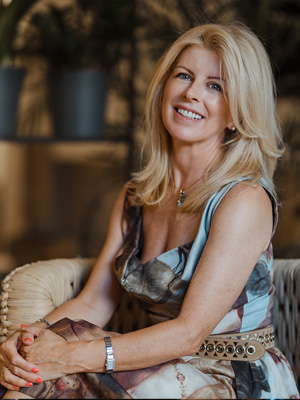I’m wandering through the streets of Venice on my summer vacation in Italy and I spot the Gucci store to my right, deciding to check out the fall collection, which – judging by the window display – has already arrived in the store. Business is brisk, with one sales assistant attending to a group of (loud) Americans and another running around gathering the best of the handbag collection to satisfy the lusts of an Arab couple and their rather large entourage.
I climb the stairs to get a preview of the new collection and I’m not disappointed. Elegantly attired mannequins display ultra-chic fine wool dresses inspired by the ‘50s, with a beautiful matching cape jacket, long leather gloves and the handbag and hat to finish the look – I’m already looking forward to winter!
As I leave (without a purchase), the middle of the pedestrian street – literally right outside the store’s main entrance – is lined with hawkers of fake luxury handbags, which are displayed on top of pieces of coloured fabric and waiting for clients. I’m a bit taken aback by the forthrightness of this display and can only assume that these sellers have their business well sussed out by the local police and customs officers.
In the ‘70s and ‘80s, selling counterfeit products was a small business – the quality was poor and the prices cheap so the luxury brands did not care much about it. But things changed in the noughties with the democratization of luxury to the middle classes and the rise of China as the production capital of the world. What the sellers of luxury did not count on was that the mass-market’s hunger to show off luxury logos would be satisfied by buying fake goods that could be passed off as the real thing
It is estimated that the fake goods industry is now worth in excess of $600 billion, according to The International Anti-Counterfeiting Coalition (IACC) in the US. The fashion industry is the worst affected by copies, with upwards of 11% of all goods being fakes.
Counterfeiting Luxury: Exposing the Myths is a report from research undertaken by Davenport Lyons (2007) through research agency Ledbury Research, which asked over 2,000 UK consumers for their views on counterfeiting and copying brands, and revealed the continuing popularity of fake luxury goods – with Louis Vuitton, Gucci and Burberry identified as the most frequently faked labels. Other findings from the report showed that those with a household income in excess of 50,000 pounds were more likely to buy fake luxury goods than those with lower household incomes. Making it a criminal offence in the UK to buy fakes was not seen as a viable deterrent, but knowledge that the proceeds were being used to fund criminal activities was much more likely to be a turn-off.
In Dana Thomas’s book Deluxe: how luxury lost its lustre, she claims that the desire to wear logo-emblazed goods one is trying to communicate wealth, status and chic. “The recognition of the brand is too important. The more you want to enlarge your business, the more you have to use your logo,” stated Miuccia Prada in an interview with Thomas. Luxury brands spend $100’s of millions a year to promote their brand, rather than the actual products which has made the logo the object of public desire.
An average income person cannot afford to spend 1,000 euros on a Prada, Gucci or Louis Vuitton handbag each season and this is where the counterfeiters found a market with a demand for good quality imitations for a fraction of the price.
The European marketing manager from Louis Vuitton told me that they employ 300 people worldwide to fight against the peddlers of imitations and it is having an impact. There has been a big crackdown on fake goods being imported to the USA and Europe, mainly originating in China in recent years. In France, for example, tourists caught bringing counterfeit goods into the country can receive a 300,000 euro fine and up to three years in prison; other countries are considering following suit.
The naïve purchasers of these counterfeit products don’t fully understand the impact of their actions. In Thomas’s book she concludes that through buying fake luxury goods these consumers are fuelling child labour in Asia, funding organized crime and possibly even terrorist activities. “The only way to stop counterfeiting is to get people to stop buying fakes just to have these logos – then and only then will it stop,” claimed an interviewee of Thomas.
For those who crave luxury logos there are other more affordable ways to have a luxury brand handbag while still staying within the law (this will be a topic for another day). There is nothing luxury, elegant or chic about wearing a ‘knock-off’. The consumers of fakes completely miss the point of luxury when they support the seedy, counterfeit industry. Let’s hope that with better education the social acceptance of wearing fakes is turned to social unacceptance. •
We would be delighted to hear your comments and ideas about this topic so please send an email to: editorial@helencummins.com.

